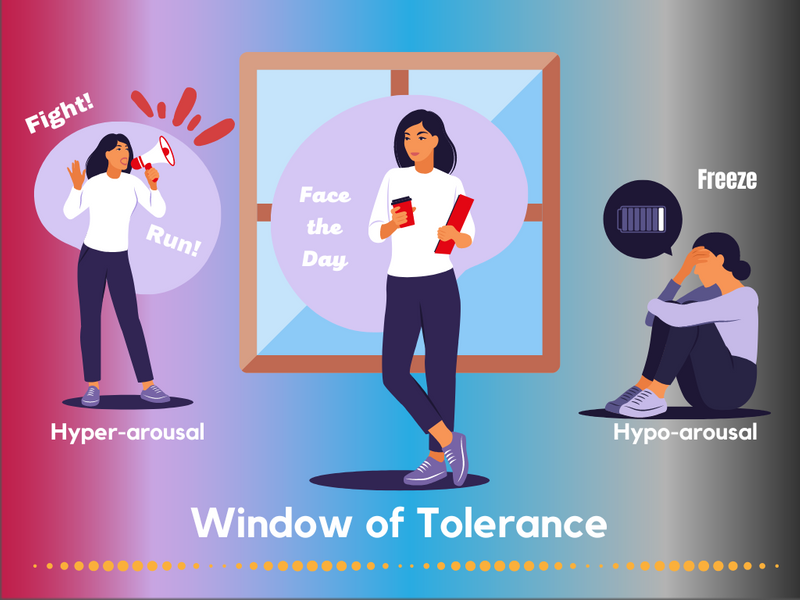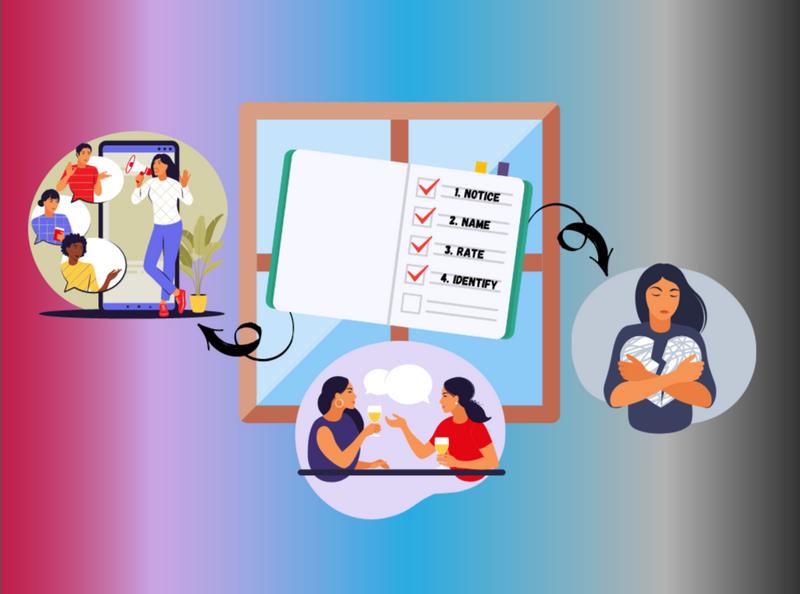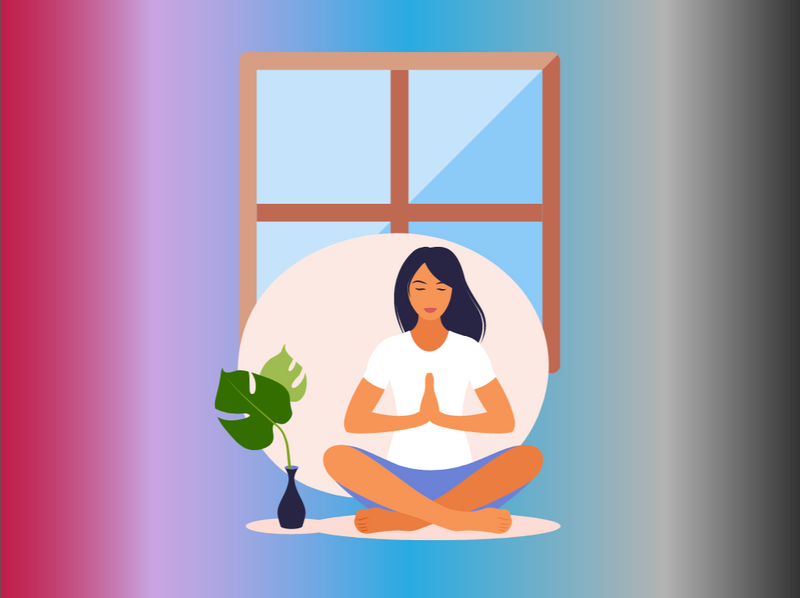Have you ever had a really bad day?
Did you feel super angry and ready to punch a wall?

Were you so tired that you completely shut down and found yourself staring absently at that same wall?

In both cases, something happened to push you outside of your window of tolerance.
What is a Window of Tolerance?
Developed by Dan Siegel, a clinical professor of psychiatry, the window of tolerance describes the best state in which we're able to function and thrive in everyday life.

When we exist within this window of tolerance, we're able to learn, work, and relate well to ourselves and others effectively.
However, if you're triggered by something inside or outside of you, then you might move away from that window.
When that happens, you can become hyper-aroused and lash out or run, or hypo-aroused and shut down.
What Are Your Triggers?
A trigger is something that causes something else to happen.

A defense trigger is something that happens to you or inside of you that causes you to emotionally react.
External Trigger
Triggers can also happen outside of you, such as a customer yelling at you.

What Are Your Reactions?
If you're within yourwindow of tolerance, you feel calm and secure, and able to deal with your emotionaltriggers and face any problems effectively.

If you are pushed outside of your window of tolerance, you might react in one or more of the following ways:
Fight
Flee (run away)
Freeze
Hyper-arousal
This is the fight or flight response to a defense trigger.
When this happens, you might get very angry and shout or behave aggressively.

Or, you might run away.

Hypo-arousal
This is the freeze response to a defense trigger.

When this happens, you might dissociate and stop responding completely, or forget where you are or what you were doing.
Practice: Stellan's Story
Help Stellan find his window of tolerance.
Stellan’s partner just asked him if he wanted coffee. He responded negatively by yelling and stomping out of the house.

Quiz
What should Stellan do to recognize why he reacted and behaved this way? Select all that apply.
How to Find Your Window of Tolerance
Find your own window of tolerance in a place where you can face challenges calmly and respond effectively.

Think of a time when you felt angry, scared, sad, excited, or experienced another intense emotion.
Now, follow these steps:

#1 — Notice Your Reactions
Emotions and reactions can happen fast! How are you feeling?
Try to noticeyour reactions:
Tension in your body
Irritation at minor inconveniences
An increase in energy
Example: Dani noticed that her shoulders were hunched up close to her neck.

#2 — Name Your Emotions
What are you feeling? Try to identify your emotions.
Emotions or feelings could include:
Anger
Sadness
Excitement
Example: Dani noticed that her shoulders were hunched up close to her neck because she felt nervous.

#3 — Rate Your Emotions
How sad, angry, numb, or calm are you feeling on a scale of 1 (mildest) to 5 (strongest)?
Ratings could look like this:
Anger (1)
Sadness (5)
Excitement (3)
Example: Dani noticed that her shoulders were hunched up close to her neck because she felt nervous. Her nervousness felt worse than usual, at level 2 or 3.

#4 — Identify the Cause
Can you remember what made you feel this way?
Triggers could be:
A customer yelling at you
Your friend forgetting to text you back
Remembering an uncomfortable conversation
Example: Dani noticed that her shoulders were hunched up close to her neck because she felt nervous. Her nervousness, or fear, was at level 2 or 3 because she remembered that her term paper is due in 2 weeks.
#5 — Keep Track and Journal

Dani has reached the last step!
Example: She writes, "Today, I noticed that I felt pretty nervous when I remembered that my term paper was due in 2 weeks. I have to work on it so I can hand it in on time!"
Dani noticed her fear response, acknowledged it, figured out why she was scared, and made a plan to address the trigger — her term paper.
Writing your triggers, reactions, and emotions in a journal over timecan help you find trends and identify what keeps you inside of — and pushes you outside of — your window of tolerance.
Practice: Angel's Story
Angel works from home. They're having trouble focusing on their tasks today.
 Photo by Elisa Ventur on Unsplash
Photo by Elisa Ventur on UnsplashThey feel like they're on a hamster wheel, going through the same motions over and over.
While on lunch break, Angel decides to write in their journal.
"I can't focus today. I'm so very bored with this work!"
Quiz
Which of the following sentences will best complete this journal entry to help Angel find their window of tolerance?
Take Action
Finding and staying within your window of tolerance can help you face life’s challenges more effectively and live a healthier, happier life.

Practice following these 5 steps to discover your window of tolerance:
You can also learn how to expand your window of tolerance.
Your feedback matters to us.
This Byte helped me better understand the topic.

